 Todd Cherches | Comments Off |
Todd Cherches | Comments Off |  Careers,
Careers,  Interviewing,
Interviewing,  Thinking,
Thinking,  jobs,
jobs,  leadership,
leadership,  meetings
meetings  Friday, February 24, 2017 at 1:37AM
Friday, February 24, 2017 at 1:37AM 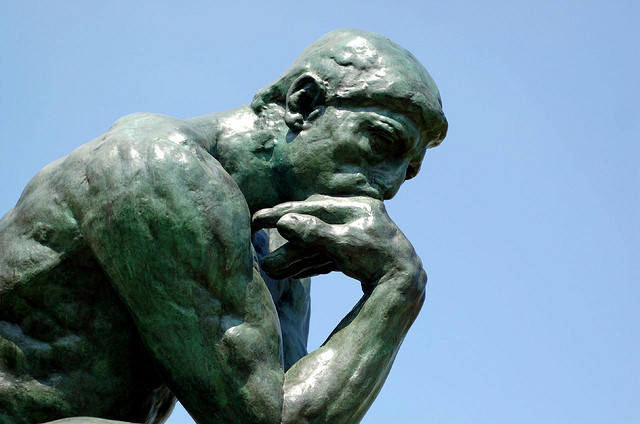
So, you have an important job interview scheduled, or a big meeting coming up with the boss or with an important client. You’ve done your homework and you’re prepared, primed, and pumped up.
But have you thought about your thinking speed?
We all know that interviews and high-stakes meetings can be very stressful, and when nerves flare up our tendency is to think and talk too fast, leading to our potentially blowing that meeting that we prepared so long and so hard for.
In his best-selling, award-winning book “Thinking, Fast and Slow,” Daniel Kahneman takes a deep dive into how we think – and shows us how we can be more effective...simply by slowing down. According to Kahneman, one of the biggest problems is that we tend to -- especially when under stress -- think too fast.
When your brain reacts and responds automatically and instinctively – almost thinking without really thinking, that’s what he calls “thinking fast.” This is how we think most of the time. On the other hand, “thinking slow” is when your brain hits the pause button and takes a brief moment to consciously reason, consider, question, analyze, and decide -- before responding or acting.
Of course “thinking fast” is a good thing. We couldn’t possibly – and wouldn’t want to – have to over-analyze every single thought before responding. But, on the flipside, how often do we make mistakes because we jump to conclusions or have impulsive, knee-jerk reactions when we might have benefited from pausing, even momentarily, to devise a more well-considered response?
So how can you leverage the power of “thinking slow” when on the spot in your next meeting or job interview?
One simple and powerful way to do so is by keeping in mind this extremely effective storytelling technique called “PARLA.”
PARLA stands for Problem, Action, Result, Learning, & Application.
Let's say the interviewer asks you a question like, "Can you tell me about a time wherein you faced a similar situation?" or you're in a sales meeting and the potential client asks, "Have you ever worked with a company like ours before?" In either scenario, you might use the PARLA method to structure your 5-part response as follows:
P – Problem: Let me tell you about the time I faced a similar situation...;
A – Action: Here’s the action I took...;
R – Result: Here’s the outcome of that action...;
L – Learning: Here’s what I learned...;
A – Application: And (*this is the most important and relevant part to the listener) here’s how I would apply what I learned from that prior experience in the future....
Very often when an interviewer or a potential client asks us a question, what often happens -- in our excitement and enthusiasm to convince them to choose us -- we excitedly blurt out something like, “Because I have a degree in x, and ten years’ experience, and I’m a hard worker, and a team player, and blah blah blah.” Not only are we thinking fast, we’re talking fast, and often just rambling on and on. And that’s exactly what so many people do.
Instead, why not try to differentiate yourself by taking a breath and a brief, two-second pause...followed by a confident, PARLA-based story that will make you stand out from the crowd.
One time a new potential client asked me "How much experience do you have working with millennials?"
My PARLA-structured response: “I've definitely spent a lot of time working with millennials! In fact, I teach a graduate course in 'Leadership & Team Building' in the HR Master's program at NYU -- and most of my students are millennials. And I've worked with a number of tech start-ups who have mainly millennial populations ("Problem"). One of the things I always make sure of when training millennials is to keep things as fast-paced, varied, and highly-interactive as possible ("Action"). I've found that when I do, it dramatically increases their attention, comprehension, and retention ("Result"). So every one of my training programs is designed and delivered with my company's "3 E's" -- Educate, Engage, and Excite -- in mind ("Learning"). And, so, I would definitely make sure that any leadership program we do for your millennial employees is highly interactive and experiential as well ("Application").
It's that simple: PARLA.
By the way, the "P" for "Problem" just refers to the comparable challenge, issue, or situation you're using as an example.
And note that even if things didn’t go well in the Results phase of your example, what’s important is that you took an Action to address a Problem, and that you Learned something valuable from it that you can Apply going forward. And, in truth, that’s really what the interviewer is, ultimately, looking for: whether or not you have the relevant experience and the capability to do the job.
Lastly, PARLA is not just a storytelling technique for use when BEING interviewed or trying to persuade someone; it is actually a classic behavioral interviewing technique that an interviewer may use to question you! If an interviewer ever starts a sentence with, “Tell me about a time when…” you will now immediately recognize that that is what they’re doing…and what they are looking for in terms of a response. So (not to give away any behind-the-scenes interviewing secrets :), but now that you are aware of this very popular interviewing methodology, going forward you will be better equipped, and can be better prepared, to respond on the spot.
Seizing the opportunity to tell a powerful, well-structured personal story using the PARLA format will capture and hold the interviewer’s attention, bring your experience to life, shows that you can think on your feet, and demonstrates with poise and confidence that you have what it takes to do the job...because you’ve been there before.
That’s the power of “thinking slow” in action.
For additional resources to help you improve your thinking skills, please check out my blog post entitled, “15 Fascinating Books to Help You Become a Better Thinker.”
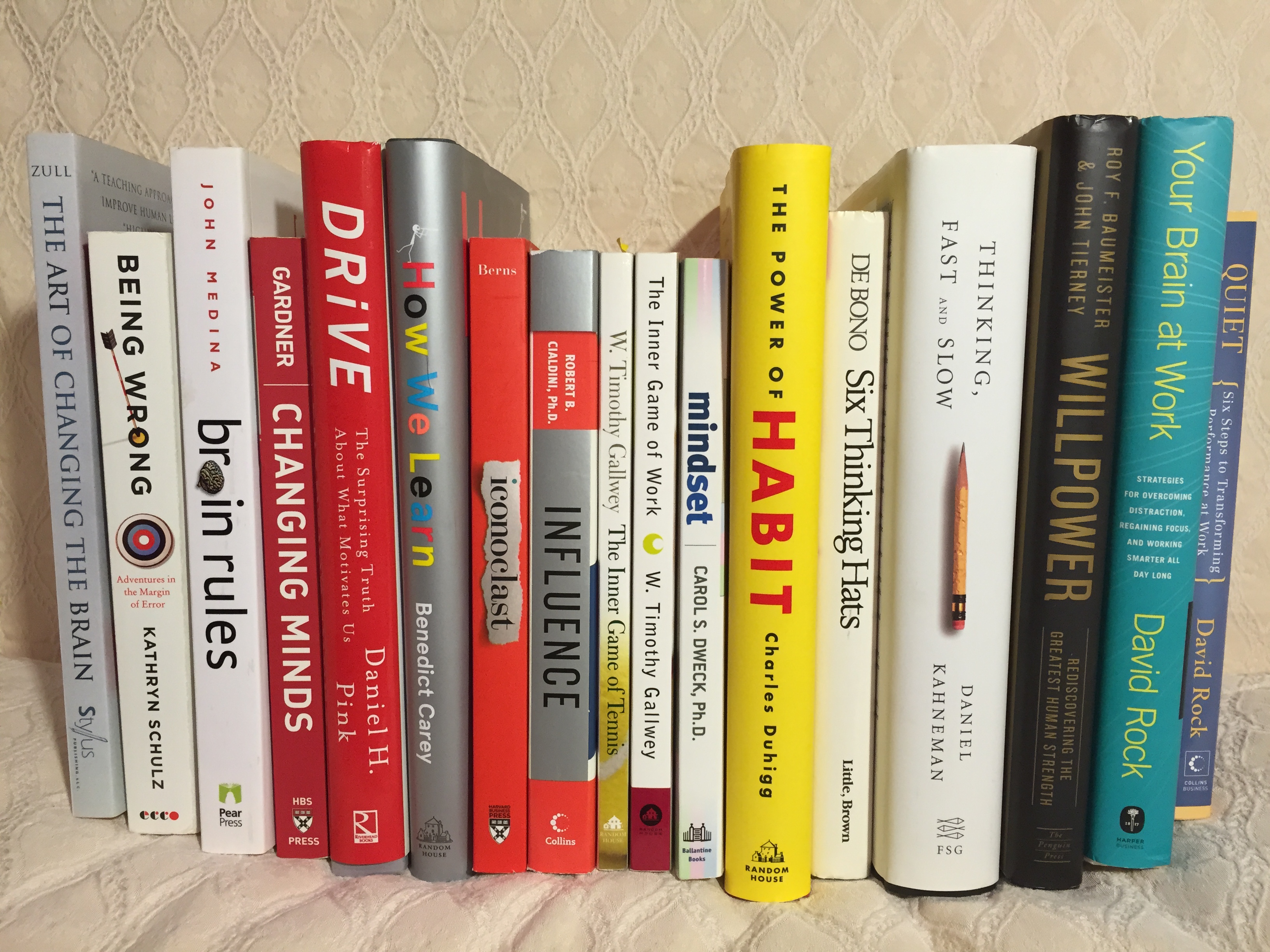
 Todd Cherches | Comments Off |
Todd Cherches | Comments Off |  Careers,
Careers,  Interviewing,
Interviewing,  Thinking,
Thinking,  jobs,
jobs,  leadership,
leadership,  meetings
meetings  Monday, January 23, 2017 at 2:32AM
Monday, January 23, 2017 at 2:32AM 
*When it comes to bugs.
Let me explain…
Early last Saturday morning I was awoken by the blood-curdling sound of my wife screaming from the other room. Still half-asleep and half-dressed I bolted out of bed in a panic yelling, “What happened!? What happened!?”
“There’s a giant roach in the bathroom!!! It’s so disgusting! It’s like six inches long – and it just ran behind the sink! You have to kill it!”
So I raced back into the bedroom to get my glasses, grabbed a rolled up New Yorker magazine (after quickly checking to make sure I was done reading it), opened the bathroom door, slammed it behind me, and prepared for battle.
After multiple attempts of swiping and missing (and, yes, I must admit, yelling and cursing), I finally crushed this hideous beast which was the size of a two-pound lobster, and flushed its remains down the toilet. (Alright, in all honesty, it wasn’t that big, but it was sizable. And it was really, really disgusting.)
With that Kafkaesque horror story now over, I crawled back into bed with the intention of picking up where I left off, to get a couple more hours of sleep.
But just as I was about to doze off, my wife came in and sat down on the bed next to me to ask me this crucially-important question:
“Did you really kill it…or are you just lying to me again?”
Not fully awake and coherent, and after the exhaustion of my traumatic bug-battle -- combined with this now, second, rude awakening -- I was like, “What -- what are you talking about???”
At which point I remembered – and burst out laughing from the recollection of -- the one and only time I lied to her in our ten-plus years of marriage:
It was back in 2007 and we had just moved into our new apartment. Having just sat down to dinner, we were both jolted out of our seats in horror by the sight of a gigantic, disgusting roach (is there any other kind in NYC?) that had come crawling out of a still-open hole in the floorboard where we just had some construction work done.
After many attempts of swiping and slamming at it with a rolled-up newspaper, I finally yelled, "Got him!", gathered up the dead roach in a paper towel, and made a huge show of crumbling it up and tossing it into the kitchen trash can.
My wife’s elated response, “My hero!”
Only, the truth is: I didn't get him. After much chasing and swatting and missing, my tiny tormentor had darted and dashed and evaded me, eventually scurrying back into the hole in the wall from whence he came. And I was hungry and just wanted to eat my dinner which was getting cold. So I doused the floorboard area with Raid, sealed up the hole with paper towels and aluminum foil, and sat down to eat my dinner. Done.
Only it wasn’t done: The nightmare was just beginning.
For, five minutes later, after finally diving into our dinner, my wife shrieked, “Oh my god – there’s another one!!!”
Uh oh. This was a literal “Moment of Truth”: Do I confess that I had failed miserably in my Battle of the Roach, and that I had given up the chase because I just wanted to sit down to eat my dinner – and, thereby, lose my “hero” status in the eyes of my new wife and be labeled from this day forward as a bald-faced liar; or do I continue my charade of having killed the previous roach…which would then only lead my wife to think we had a large-scale infestation problem on our hands in our new apartment…in which case we would have no other choice but to move out?
Do I tell the truth…or was I now in what Seinfeld would have labeled a “must-lie situation”?
So I made the decision: I would come clean and tell the truth, the whole truth, and nothing but the truth.
And I made the promise – to myself and to my wife – to never lie to her about anything ever again.
A Few Leadership Lessons From This "Bug's Life" Tale
So what lessons can we take from this episode that we can apply not only to our personal relationships, but to the world of business and leadership as well?
In short, when you lie – about anything – that’s it: You are now, from this day forth, branded “a liar.” That is now your reputation. Once you plant a seed of doubt in someone’s mind, no matter how small and/or trivial, that seed never goes away. Luckily for me, my wife now only distrusts me when it comes to bugs. But to someone else, or if you have been found to lie or bend the truth repeatedly, everything you say thereafter will be subject to questioning and testing of its validity. And it forever casts its doubt on your trustworthiness – as a person, and as a leader.
Sadly, in this “post-truth” world we’re currently living in – of fake news, falsified data, and “alternative facts” – it is more important than ever to be viewed as a person of integrity, honesty, credibility, and trust. For, once you lose people’s trust, that’s it…your reputation is shot. This is deadly for a leader, or somehow who aspires to be. And once you lose it, it is almost impossible to get it back. I am reminded of the saying (author unknown) that “The truth doesn’t cost anything; but a lie could cost you everything.”
So what can we do to be seen as one of those rare (in this day of age) people of integrity, honesty, credibility, and trust? Here are a few simple tips and guidelines to keep in mind:
And, lastly, remember that one little lie about one little (ok, gigantic and hideous) insect could potentially continue to haunt you – and may continue to “bug” the person you lied to – even a decade or more later.
For more on this important topic of building trust, please see my post entitled “For a Leader, Is It More Important To Be Liked, Admired, Respected, or Trusted?” featuring my Hierarchy of Followership model.
END
 Todd Cherches | Comments Off |
Todd Cherches | Comments Off |  Authenticity,
Authenticity,  Communication,
Communication,  leadership,
leadership,  trust
trust  Tuesday, January 10, 2017 at 7:41PM
Tuesday, January 10, 2017 at 7:41PM 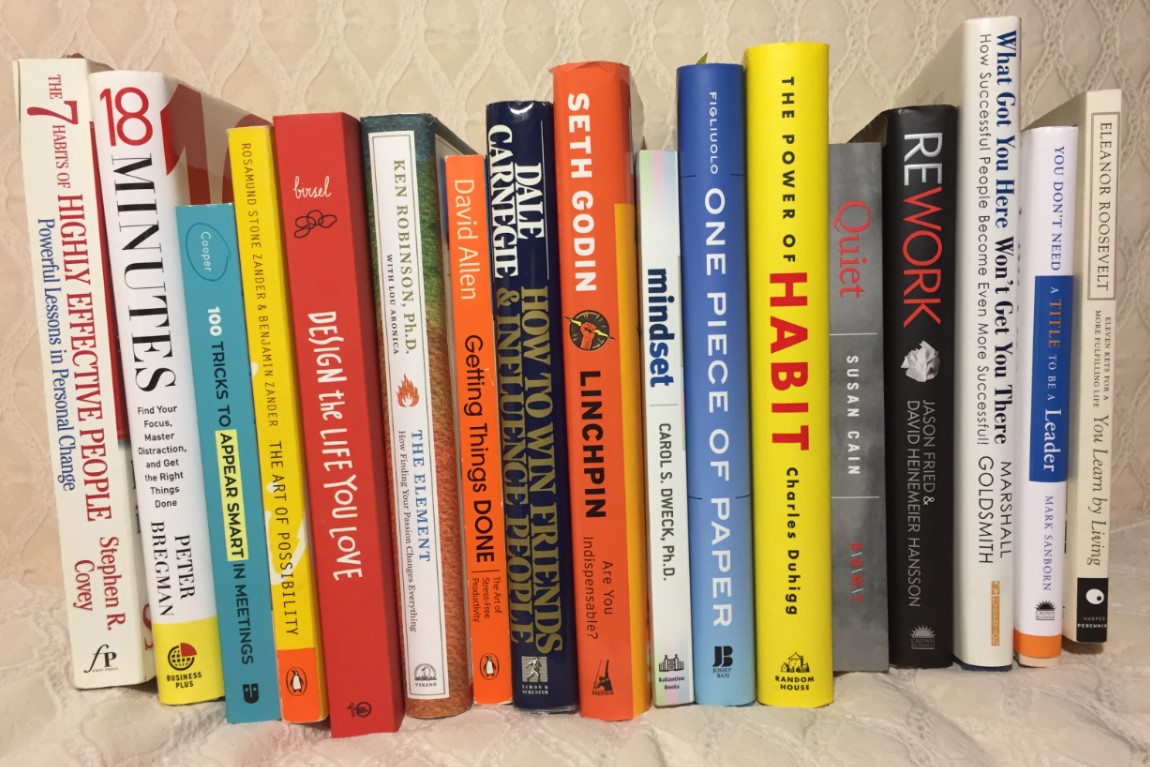
Every new year it’s the same thing. We start out with good intentions, high hopes, and a formidable list of potentially life-changing resolutions. And for an indomitable few, those resolutions get carried through and result in a laundry list of transformational changes and positive outcomes by the end of the year.
But for most us, despite our very best intentions, life tends to get in the way. Before we know it, January is over and February flies by (it’s such a short month!). Then all the spring holidays come along. Then it’s summer, and…well, you know the rest. That pledge to “start tomorrow” just leads to the eventual realization that today is yesterday’s tomorrow and we haven’t even gotten out of bed yet. So, what can we do about it?
We can start today. For real. Right now. What we need to do is go from “resolutions” to “real solutions”! And one real-life solution that really works, is easy to do, and can kick-start us into action, is to start reading!
And my recommendation – if you are really serious about, and dedicated to, improving your life this year – is to start your New Year by reading any one of the following 17 inspirational and impactful books on this list.
My Selection Criteria
There are a million business and self-help books on the shelves, so why these?
Because these are all written for – and about – YOU. Each of these chosen selections is practical, actionable, and even, yes, pleasurable to read. While there is a time and a place for heavy academic research and serious business case studies, these selections are all relatively easy-to-read and intended for the single purpose of helping you to become the best “you” that you can be – in work and in life.
I read (and/or re-read) an average of 5-10 business books a month on topics ranging from management and leadership to teamwork and innovation. But the books on this list are more related to personal and professional productivity, and are intended to help you to discover your passion, figure out what makes you tick, overcome your obstacles, conquer your fears, and spur you to action. They’ll help you to get focused, more effectively manage your time, and provide you with a number of powerful and innovative ways to maximize your Performance, your Productivity, and your Potential (what I call the “Three Ps” of success).
Yes, I know you’re busy working. Or going to school. Or looking for work. Or all three. And you’re exhausted – physically, mentally, emotionally, and spiritually. And it’s so much easier and more relaxing and fun to just kick back on the couch and binge watch back-to-back episodes of “Game of Thrones,” “Mr. Robot,” “The Walking Dead,” or “Orange is the New Black.” But if you’re really serious about making a change, and taking your career – and your life – to a whole new level this year, think about the potential ROI (Return on Investment) that making the time, and taking the time, to read just one – ANY ONE – of these books could potentially bring!
My 2017 List
While some of these title are newer releases, others are what I consider either recent and/or timeless classics. Every one of them (listed here in alphabetical order) have had an impact on me both personally and professionally, and are among my regular, go-to favorites that will, hopefully, “Educate, Engage, and Excite” you, as much as they did me. While most of the 50-plus new business books I read each year simply end up on the shelf afterwards, these are among the special few that I keep within arms’ reach for regular, repeated reference all year ‘round:
1) 7 Habits of Highly Effective People, The: Powerful Lessons in Personal Change (Stephen R. Covey): When people ask, “What’s the ONE book I should read to become more effective and productive?” this timeless bestseller is the one. At the very least, even if you don’t choose to read the whole book cover-to-cover, everyone should at least know what those seven habits are. (For your convenience, here they are.)
2) 18 Minutes: Find Your Focus, Master Distraction, and Get the Right Things Done (Peter Bregman): If time management, prioritization, and personal productivity are a challenge, this new book by master storyteller, Peter Bregman, will help you get your life on track and start producing results. (See the Bregman Box on page 118).
3) 100 Tricks to Appear Smart In Meetings (Sarah Cooper): Is it more important to BE smart, or to APPEAR smart? This hilarious and entertaining illustrated book will help you to do both. While in some ways more of a humor book than a business book, there are real work-related observations and insights on every page. Disclaimer: If you don’t have a sense of humor or don’t find anything about work meetings to be in any way funny, you may want to just skip this one.
4) Art of Possibility, The: Transforming Professional and Personal Life (Rosamund & Benjamin Zander): Indescribably brilliant and inspirational storytelling by this husband and wife team. I re-read this book from cover-to-cover once a year. (Watch his famous TED Talks.)
5) Design the Life You Love: A Step-by-Step Guide to Building a Meaningful Future (Ayse Birsel): A beautiful, thought-provoking, interactive, and inspirational workbook that will take you on a journey of discovery by applying design principles to your own life. And if you ever have a chance to attend one of the author’s wonderful, life-changing workshops, I would highly recommend it!
6) Element, The: How Finding Your Passion Changes Everything (Dr. Ken Robinson): When who you are and What you do are in alignment and harmony, you are “in your Element.” This book will help you get there. (His RSA animated video is a true classic.)
7) Getting Things Done: The Art of Stress-Free Productivity (David Allen): If you are simply looking for a straight-forward, no-frills, systems-based approach to getting yourself organized, getting yourself moving, and getting things done, this is the number one book out there on the subject of personal and professional productivity. (Tons of tools on his GTD website.)
8) How to Win Friends & Influence People (Dale Carnegie): This, the first-ever “self-help” book, is the one that started it all. Written in 1936, this book has, literally, changed millions of lives worldwide. Now it’s your turn. The title says it all.
9) Linchpin: Are You Indispensable (Seth Godin): I absolutely LOVE this book by one of my all-time favorite thought-leaders. In today’s working world, we need to consistently find ways to add value and stand out in a crowd. This brilliant book will inspire you to overcome your “lizard brain” and create your own path to success. I’ve read at least 15-20 of Seth’s books; every one an innovation and an inspiration. This is the one that had the biggest impact on me. (For a taste of Seth's work, subscribe to his daily blog which will change the way you see the world on a daily basis.)
10) Mindset: How We Can Learn To Fulfill Our Potential (Carol S. Dweck, Ph.D.): This is the book that put the terms “growth mindset vs. fixed mindset” on the map, and shows us how understanding the important distinction can enable us to shift our mindset and unleash our potential…as well as that of others. A powerful and valuable resource for business people, teachers, parents, and everyone else.
11) One Piece of Paper: The Simple Approach to Powerful, Personal Leadership (Mike Figliuolo): What if you could capture, on a single sheet of paper, in meaningful maxims, your own personal guide to leading yourself, leading the thinking, leading others, and leading a balanced life? This creative and interactive book will help you do just that! (Full/proud disclosure: My “leadership self-awareness” guest post made his Top Ten list in 2012!).
12) Power of Habit, The: Why We Do What We Do In Life and Business (Charles Duhigg): Whether trying to break an old habit or start a new one, this book will help you transform yourself into the person you would like to be through gaining a better understanding of how habits work…and what it takes to break the bad ones and start some better ones.
13) Quiet: The Power of Introverts in a World That Can’t Stop Talking (Susan Cain): Finally, someone has given us introverts a voice! This book (targeted both towards introverts AND extroverts) is the definitive work on what introversion is really all about. Also, check out Susan’s inspirational TED talk that put her on the map.
14) ReWork (Jason Fried & David Heinemeier Hansson): Like Godin’s “Linchpin,” this book cuts through the crap and tells it like it is. Written with humor, attitude, and artistry, these guys get you to look at the world of work in a fresh new way.
15) What Got You Here Won’t Get You There (Marshall Goldsmith): One of my top ten favorite business books of all-time, this classic work reveals the twenty bad habits we need to break...and how to break them so as to become even more successful. I also highly recommend a number of his other titles including “Mojo,” and “Triggers: Creating Behavior That Lasts.” Also check out his website for numerous valuable videos and other generous resources.
16) You Don’t Need a Title to Be a Leader: How Anyone, Anywhere, Can Make a Positive Difference (Mark Sanborn): This quick-and-easy-to-read, 100-page book of simple stories will encourage and inspire you to step up to leadership – regardless of your role, position, or title. I love this powerful little book and re-read and reference it all the time.
17) You Learn By Living: Eleven Keys For a More Fulfilling Life (Eleanor Roosevelt): An inspirational work by an amazing woman who was way ahead of her time. Among the many life lessons she passes along in this powerful memoir is one of her most famous quotes: “You gain strength, courage, and confidence by every experience in which you really stop to look fear in the face... You must do the thing you think you cannot do.”
So that’s it. Again, there are many other great books out there that can help you to increase your effectiveness, but as the wealth of options is seemingly unlimited and somewhat overwhelming, this list of personal favorites is intended to answer one of the most commonly-asked questions I get both from my coaching clients and from my students: Where should I start?
So just pick ONE and dive right in. You might even happen to have a few of the bestselling classics already piled up on your nightstand gathering dust, or sitting on your bookshelf. But remember that BUYING the book with the best of intentions – as so many people do – is not enough; you need to actually READ it to reap the benefits. That’s obvious and common sense. But, as the saying goes, “Common sense is not always common practice,” and industry research tells us that a large majority of business books purchased are never even opened, let alone finished.
As Harry Truman said, “Not all readers are leaders, but all leaders are readers.” So if you truly want to lead, you probably should start to read.
One Final Important Tip
After you finally sit down and crack the cover, don’t just skim through it: Really read it, devour it, interact with it, engage with it, absorb it, consume it, and make it your own. Business reading should not be a passive, but an active – and even an interactive – experience. Yes, that takes “work”; but you have to do the work if you want to reap the benefits:
If you’re really serious about turning your New Year’s “resolutions” into the “real solutions” mentioned earlier, I hope you will take me up on this challenge, pick up any one of these books, and dive right in. And let each book on this list be a spark that ignites your passion and inspires you to set the world on fire in 2017.
For some of my other top book recommendations (as if this list isn’t enough), please see:
15 Fascinating Books to Help You Become a Better Thinker
14 Books That Will Make You More Innovative
END
 2017,
2017,  Business Books,
Business Books,  Management,
Management,  Time Management,
Time Management,  leadership,
leadership,  productivity in
productivity in  Effectiveness
Effectiveness  Wednesday, November 16, 2016 at 6:32PM
Wednesday, November 16, 2016 at 6:32PM 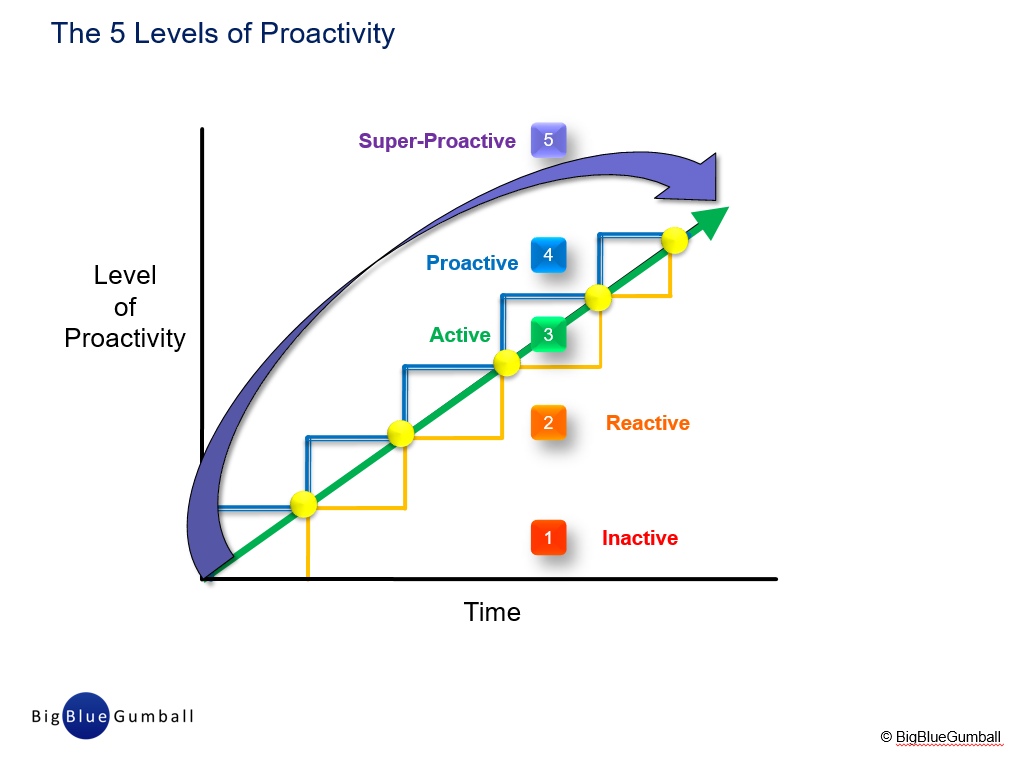
Do you wait for things to happen . . . or do you make them happen?
Do you find yourself stalling for the perfect time to take action…or do you make “now” the right time?
Do you always find yourself one or more steps behind and playing catch-up…or do you go about your business feeling confidently and comfortably ahead of the curve?
Whether we’re talking about your personal life or your career, one of the most overlooked keys to success is the level of “proactivity” at which you tend to operate.
Life and work are filled with daily barriers, obstacles, and challenges that stand in the way of our getting things done. For example:
There are probably other factors as well. But if you look at this particular list, what all these reasons have in common is that they are all INTERNAL…and, therefore, all within our control.
HOW PROACTIVE ARE YOU?
Here is a simple-yet-powerful model that we call “The 5 Levels of Proactivity.” Let’s explore it from the bottom up to see how we can work our way up from being Inactive, to Reactive, to Active, to Proactive, and, ultimately, to Super-Proactive:
Level 1: INACTIVE. At this level, something is needed from you…and you do nothing. Absolutely nada. Zero. Zilch. For whatever reason, you decide to take no action at all. Maybe the problem or request will just go away by itself. But probably not.
Level 2: REACTIVE. At this level, something is needed, and you respond. This is actually a good thing! So congratulations – you’ve put out the fire. The only problem is if you are constantly in reactive, fire-fighting mode, you are always at least a step behind. After a while, as the speed of needs and expectations increases, you may fall so far behind that you are unable to catch up. And then people are constantly waiting for you, getting frustrated and impatient…until they decide to look elsewhere for what they need.
Level 3: ACTIVE. When you are at this level, you are keeping up with demand, giving people what they want and need, in real-time, when they need it, and meeting expectations. Things are going well, and you are keeping up with the pace. The only problem is that when you are just keeping pace, you are not getting ahead. At this level, there is no time or space for growth. You’re getting things done, but you’re either treading water or standing still. And in an ever-changing world, if you’re standing still, you’re falling behind.
Level 4: PROACTIVE. Now we’re getting somewhere! At this level you are not only keeping up with the pace, but setting the pace and staying a step ahead. You are not just putting out fires, you’re preventing them. You are not just meeting expectations, you’re exceeding them. Anticipating others’ needs and expectations, you are thinking on your feet, doing your homework, looking down the road, putting yourself in the shoes of your customers, fostering an environment of growth and development for yourself and others, and taking control of your destiny. Remember that the root word of “pro-act-ivity” is “act” – and you are ready, willing, and able (and excited) to ACT!
Level 5: SUPER-PROACTIVE. Now you are not just setting the pace…you are leading! With a vision of the future, you are thinking not just one step ahead, but many steps ahead. This is where innovation happens, this is where paradigms shift, this is how you drive change and blow people away. This is where you develop your reputation as a guru of, or the go-to person for, things. The leaders of the future are those who are able to meet the demands of today while consistently anticipating and exceeding the needs of tomorrow. You anticipate what people want and need before they even realize it. You are a visionary. And as management guru Peter Drucker famously said, “The best way to predict the future is to create it.”
That’s the model in a nutshell. Now let’s bring it to life with a simple, practical, real-life example: Let’s say it’s January 1st and you decide you want to get in shape for the summer.
If you’re INACTIVE, you don’t do anything about it. You procrastinate, you say, “It’s only January. I can wait a few months to get started.” But didn’t you just “decide” you were going to take action? That reminds me of the old riddle: There are five frogs sitting on a log, and one decides to jump in the water. How many frogs are now sitting on the log? The answer: Still five. One “decided” to jump in, but he didn’t actually DO it. It’s not the “deciding,” but the “doing” that counts.
If you’re REACTIVE, you’ll work out if someone else drags you along to the gym, or you’ll eat better if someone else shops for healthier food and places it in front of you. But you are not in control, and you are not taking responsibility, driving the changes, or owning the behavior necessary to achieve your desired outcome.
If you’re ACTIVE, you’ll get off the couch and work out if the mood hits you, and you’ll have an occasional low-calorie fruit juice or water rather than a soda. And you’ll replace that Big Mac with a salad. Your intentions are good, you’re taking baby steps, and you’re trying, but it’s sporadic and undisciplined, and you don’t really have a plan.
When you’re PROACTIVE, you make a plan – a structured, formalized, written plan, and you stick to it. You put a process in place and set a quantifiable goal of working out x days a week – no excuses. Your diet plan includes the sacrifices you’re willing to make...and you keep those commitments without fail. You follow through and you follow up. You make real behavior changes and track the results, with no excuses and no exceptions.
And what would being SUPER-PROACTIVE look like? It’s about having a longer-term time horizon and thinking many steps ahead. It’s about imagining the possibilities and anticipating potential obstacles that may arise down the road. Perhaps thinking and planning beyond the summer, into the fall, winter, spring, and maybe even into following year. Always thinking and acting with the big picture and a long-term vision of the future in mind.
So that’s just one example. How might YOU use this model to be more proactive in your personal life? To be less stressed? More productive? Happier? To take charge of your career? To get more things done? To impress your boss, to better serve your (internal and external) customers, or to be a more effective manager and leader?
How important is proactivity? In Stephen Covey’s classic book The 7 Habits of Highly Effective People, “Be Proactive” is Habit #1. That’s how important it is.
It’s not easy being proactive; it takes time, attention, energy, discipline, and vision. But the good news is that the decision to be more proactive is entirely up to you and completely within your control. And it’s never too late to get started. As Confucius said, “The best time to plant a tree was twenty years ago; the next best time is today.”
And while being more proactive – and super-proactive – may involve making some radical changes and taking some substantial risks, as the saying goes: sometimes we just have to go out on a limb…because that’s where the fruit is.

 Todd Cherches | Comments Off |
Todd Cherches | Comments Off |  Careers,
Careers,  Management,
Management,  leadership,
leadership,  levels,
levels,  proactivity,
proactivity,  success
success  Sunday, September 4, 2016 at 5:31PM
Sunday, September 4, 2016 at 5:31PM 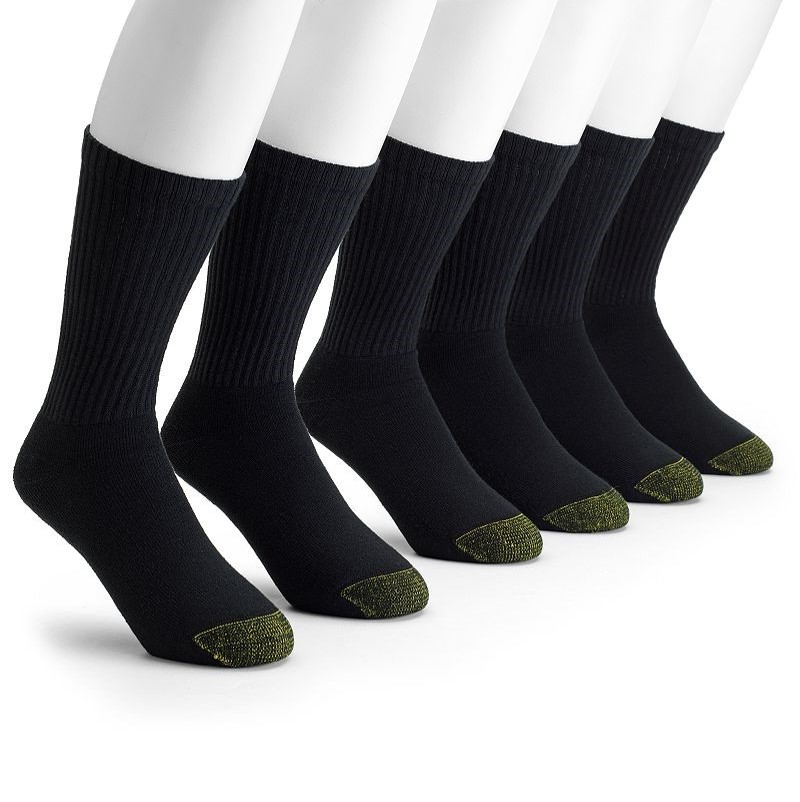
There was a time, a while back, when I was traveling for business almost every single week. That meant packing for three or four days on the road at a time, having to figure out which suits and shirts and ties I was going to wear. And then having to choose the perfect pair of socks to match each outfit.
This may seem trivial, but I had about 30 different colors and varieties of dress socks in my drawer to choose from, each with different designs, patterns, stripes, and shapes. So every time I got to this dreaded stage of the packing process, I would get more and more bothered by what an annoying, useless, and royal time-waster this was.
Until one day, as I sat there staring deep down into the abyss of my sock drawer, I came to the realization that something had to change. So I made the potentially life-altering decision that I would switch to wearing nothing but solid black socks from then on. And, so, the very next day, I went down to Macy’s in Herald Square and bought 18 pairs of the exact same plain, black dress socks.
Guess how many of my clients ended up noticing? None. And yet, how much time, energy, and stress did I immediately eliminate by making this one simple change? Tons!
By now, you’ve probably figured out that this post – and the Black Sock Decision-Making principle – isn’t really about hosiery at all. It’s about stepping back and finding ways to simplify the complexity in our everyday lives, and exploring the possible ways to reduce – by even one – the dizzying number of decisions we need to make on a daily basis.
Think about it: How many decisions did you have to make today…before you even left for work this morning?
What time to wake up?
SIMPLIFYING COMPLEXITY
Now imagine how much easier and less stressful your morning would be if you could eliminate just one single decision (or more!) from this list, simply by reconsidering your options and then streamlining your decision-making process.
In one of my favorite TED Talks (and books), “The Paradox of Choice,” psychologist Barry Schwartz explains “why more is less,” and how having TOO MANY options is actually too much of a good thing.
And in the beautiful and amazing book, Presentation Zen, the brilliant Garr Reynolds encourages us to seek out ways to turn complexity into simplicity – in our communications and in our lives – by looking for ways to strip things down to the “essential.”
Yes, the ability, and the willingness, to see things with new eyes and to differentiate the “essential” from the “non-essential” requires both mindfulness and time. But it will end up saving time in the long run, helping us to focus, be more purposeful, make better decisions, become less stressed, and ultimately, change our lives for the better.
So keep in mind these three classic quotations:
And remember that the more decisions in our lives that can be standardized, systematized, automated, and/or eliminated, to the point where we don’t even need to think about them anymore, the more we can free our time – and our minds – to focus on the things at work, and in life, that truly matter.
That, in a nutshell, is what the principle of “Black Sock Decision-Making” is all about:
Simplifying your life...one day – and one sock – at a time.
 Todd Cherches | Comments Off |
Todd Cherches | Comments Off |  Decision Making,
Decision Making,  Simplify comlexity,
Simplify comlexity,  Thinking,
Thinking,  leadership
leadership